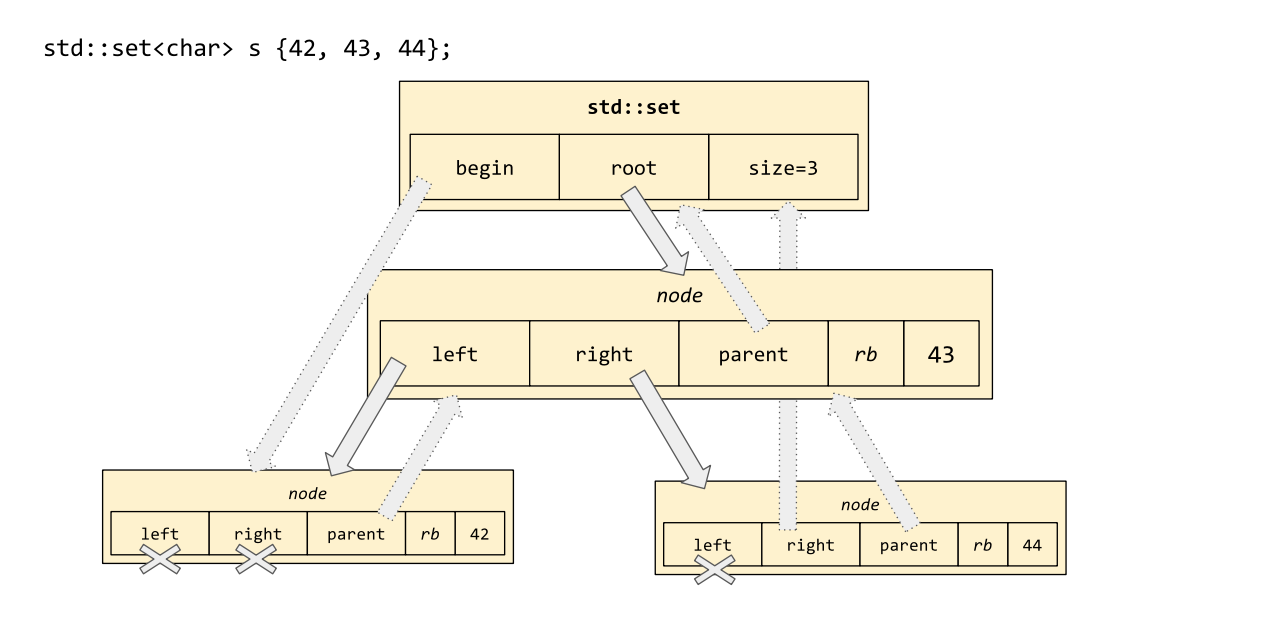The trees: std::set<T> and std::map<K, V>
The class template std::set<T> provides the interface of a "unique set" for any T that implements operator<. As always with STL operations that involve comparison, there is a version taking a comparator: std::set<T, Cmp> provides "unique set" functionality using Cmp(a,b) instead of (a < b) to sort the data elements.
A std::set is conceptually a binary search tree, analogous to Java's TreeSet. In all popular implementations it's specifically a red-black tree, which is a particular kind of self-balancing binary search tree: even if you are constantly inserting and removing items from the tree, it will never get too unbalanced, which means that insert and find will always run in O(log n) time on average. Notice the number of pointers involved in its memory layout:

Since, by definition, a binary search tree's elements are stored in their sort order (least to greatest), it would not be meaningful for std::set to provide member...




































































